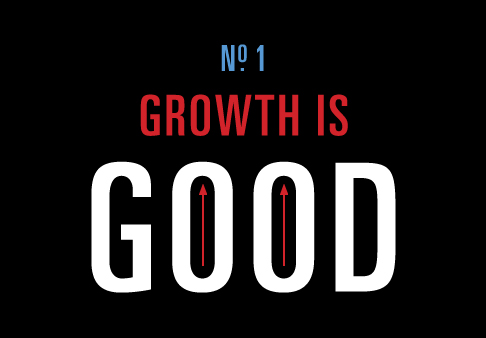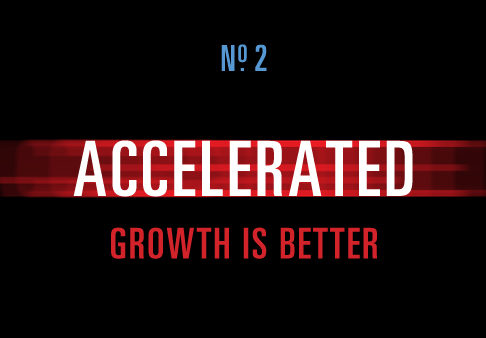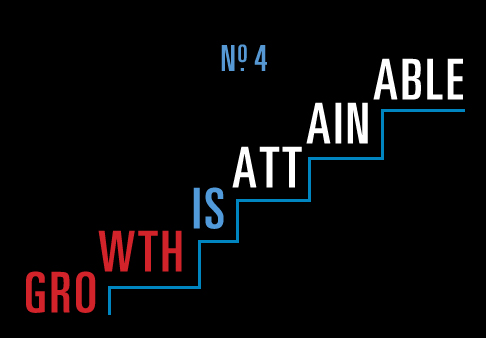



| The creation of fast acting, upwardly accelerating, new world finding brands. The brand strategy that forces every ounce of growth out of the brand and then some more and right away. This is Rocket Branding. |
GASLIGHTED
July 22, 2024 By admin
I have lived and worked all over the world and gratefully have experienced much of what life has to offer. I consider myself well-informed, open-minded, and, more to the point, a lifetime student of Branding, especially concerning what is happening worldwide.
So what? Well, now I am totally lost.
The world is upside down. We are to believe that reality is not reality. We are to believe what we are told, not what we see. Many now call this gaslighting.
We are to believe that a senile older man is not a senile older man, a convicted felon can lead the free world, males can compete in female sports, and an economy is strong despite record inflation, prices, and debt. Also, we are supposed to accept that criminals can go free, millions of unknown foreigners can pour across our borders, politics does not corrupt our justice systems, and a 20-year-old can climb a building with a rifle and shoot an ex-president in full view of Homeland Security and the Secret Service.
And that’s just in the US. In the Middle East, we are supposed to believe that it’s justified for brutal, murdering terrorists to attack a neighbor, hide behind their civilians in hospitals and refugee camps, and watch them die. Then there is the environment. We are to believe that the world’s largest maker of EVs is not also the world’s biggest polluter, burning the most fossil fuel in the world – in large part to make those fossil-fuel-saving cars. Upside down. Gaslighted.
Unfortunately, this list can go on, but what does this do to your Branding? How should you build your brand over the next 3-5 years?
Some things to consider…
- Follow The Money. Sorry, but this is incredibly important. Historically, the masses usually pay the price when leadership is crazed and uncertain. Savings and investment plans turn into debt management struggles. This is not likely to change for the better any time soon. Take a fresh look at how your critical growth consumer or customer target changes purchase decisions and how it will affect your brand strategy. This is rather obvious, but trends related to money pressures are often recorded too late to do anything substantive about. Get ahead of it.
- Look to the Young. Whether they are your brand target or not, teens and 20-somethings are most affected by uncertain times. For many today, the cost of fun is unaffordable, and living costs are downright scary. This puts money pressure on everyone – parents, family, and others who must help.
So, how is this affecting the young?
I just read a terrific article in Forbes by Kris Nagel titled;‘Gen Zers are sodisillusioned with the economy that many think that it is OK to commit fraud.’ Almost half of the researched are happy to admit it’s okay to contact a seller for a refund for a perfectly fine product they just purchased. Big deal? Yes, it is, especially when you couple this with civil unrest…mobs of unruly young people looting and damaging retailers, often with impunity. One looter famously said, “It was OK because these stores have insurance.” These are just two data points, but the picture is quite clear. Those dissolutioned become disenfranchised, and then they retaliate. Any form of authority figure (govt, police, corporations, etc.) is fair game. “It’s not a crime if you get away with it.” As these young cohorts are connected worldwide via TikTok, etc., this global situation will not go away soon.
OK, enough about the woes. What about branding solutions?
Nothing here suggests that Branding is worthless in this stressed environment. On the contrary, it could be time to double down on brand support. Depending on your brand’s core growth target or SOB (Source of Business target, as we call them), your specific efforts may change. However, as everyone is dealing with the same daily situations, might I suggest the following approaches … relate, reward, and rejuvenate? (Like the alliteration … creative, eh!).
Relate. Now is not the time in history to be overly authoritarian, oblivious, or, more importantly, unauthentic. As many company brands have joined the ‘purpose-driven’ train, there is a tendency to talk about how wonderful they are … saving the whales, etc. Worthy causes no doubt, but when your SOBs are surviving paycheck-to-paycheck, maybe that money should go to lowering prices and providing meaningful discounts and incentives.
Reward. Growing brand loyalty is difficult when price points are high. Low-price, non-branded items do just fine. There must be a reward for paying more for a branded product or service. The ‘x factor’ is and always will be quality. Now is the time to reward your SOBs for choosing quality.
Rejuvenate. Hope and positive energy are the right tonic for the times. Employ them.
We at Rocket Branding would love to discuss your brand and how to employ these tactics to keep winning in the market. And this will definitely not be by gaslighting.
Use Your Words
December 18, 2023 By admin

Like most mothers, my wife tirelessly taught our kids to “use their words” when angry or frustrated. Makes sense, right? Better to talk it out than fight it out.
OK, but what does this have to do with branding? Well, a whole lot today.
Societal behavior has changed. I’m not sure if it’s an evolution or transition or what, but in today’s highly judgmental and litigiously sensitive world, words are loaded and often weaponized.
On the world stage, one person’s ‘terrorist’ is another’s ‘freedom fighter.’ Any questioning or equivocation here can immediately drop you in the middle of an active ‘pro’ or ‘anti’ group.
It’s heady stuff, for sure. Come talk to us if we can help you better understand where and how your brand can thrive in even as confusing a market as we have now.
Closer to home, most people are decidedly either a Democrat or a Republican. The gap between us has never been wider. One errant comment about guns, open borders, and inflation makes you an ‘extreme MAGA Republican.’
Any comments of inhumane treatment of people, animals, or the environment will label you an ‘extreme liberal Democrat’ with ‘woke’ blood surging through your veins. And now, we all need to be trained to understand gender and sexual labels – ‘they,’ ‘them,’ ‘trans,’ ‘cis,’ ‘binary,’ ‘LGBQT+,’ and so on. Indeed, everyone must be respected for who they are and their individuality. No judgment here, but any use of the wrong word can be deemed deeply offensive to someone and met with swift and angry reactions.
What happened to mutual respect and ‘using our words’ to freely express views without being cut off and summarily dumped into an extreme bucket?
Is common sense under fire? Has ‘hype’ media taken over? Extreme views and warring factions make for great headlines and ratings. Where is objectivity and impartiality? Are we moving to a culture where inclusion outranks achievement, ‘optics’ rule, and mislabeling cannot possibly be accepted as an innocent mistake? Perhaps it is better not to say anything!
So much for ‘using your words’.
OK, what about branding?
Well, ask Bud Light. We all know the story. A promotion that partnered with a trans influencer lost the brand’s substantial share and a leadership position that they may never regain. Adidas, Target, and others who innocently tried to cater to similar new audiences were immediately labeled as ‘woke’ and publicly attacked accordingly.
So, what is the solution for a brand message in today’s market?
Should a brand stay mainstream, entirely out of social discord, and devoid of social labels? After all, who cares what a banana grower or widget maker thinks? Possibly, but what happens to those new or current employees who demand to work for companies and brands that are ‘purpose-driven’ in terms of the betterment of humanity? Does staying quiet and agnostic create a relevance issue?
Like in most sectors of our life today, it’s complicated.
But then again, does it have to be?
I have a simple solution.
When the world is in turmoil and the immediate future is uncertain, two factors will always win. Authenticity and Leadership. When times are wild, your brand’s consumers and customers are hungry for the truth and someone to give them hope for the future. This is the absolute opposite of ‘virtue signaling.’
You must understand your company and your brand’s SOBs (your Source of Business targets). If you know what your crucial growth users think and what they desire from your brand, focus all your efforts on providing the best product or service you can. And importantly, pay special attention to this … offer an authentic, relevant brand ‘home.’
The greats… Apple, Nike, Harley Davidson, Starbucks, Amazon, and even Taylor Swift provide an emotional venue where their SOBs want to be. Yes, a particular tagline or ad campaign might have drawn you to a brand. Still, mostly, it’s about being real and allowing your users the room to experience, adopt, and advocate your brand as a reflection of themselves without false assertions.
Advocate for your consumers and customers, your SOBs, and your people. Have the courage to lead them and do what’s right for them. No one can blame AB for wanting to expand Bud Light to a growing user group. Do not do it if it makes your core customer (your primary SOB) uncomfortable or alienated. If the beer they hold betrays their image of themselves, they will vacate your ‘brand room’ in droves. Greed is no excuse.
And here is an obvious tip. If you advocate for something socially beyond how wonderful your brand is, pick something everyone can agree on … not profoundly polarizing. I just noticed that Purina is advocating against domestic pet abuse… something that everyone, including their SOB, can agree on and would add to their brand room, I would think.